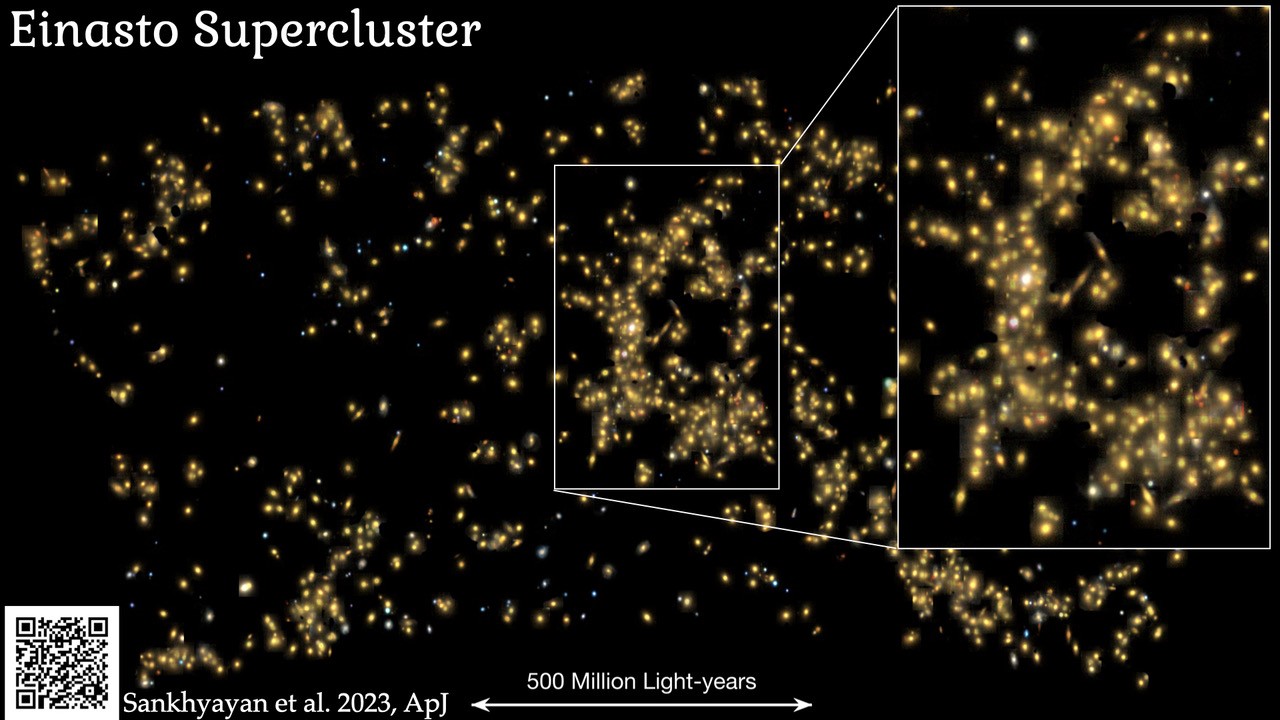An international group of scientists led by astronomers from the Tartu Observatory of the University of the same name announced the discovery of numerous superclusters in the universe, the most famous of which was named Einasto Supercluster in honor of Professor Jaan Einasto, who celebrated his 95th birthday on February 23.

Superclusters, like huge megacities in space, are the largest and most massive galaxy clusters in the universe. The scientists’ research has not only expanded our understanding of these huge structures, but also shed light on the mystery of their origin.
In their study, they found that the average mass of the supercluster exceeds the mass of the Sun by 6 million times, and their average size is 200 million light-years. For comparison, these superclusters are about 2,000 times larger than our galaxy.
The Einasto Supercluster, which is the most massive, is located at a distance of about 3 billion light-years from Earth. Imagine one 10 UAH coin on a football field representing the size of the Milky Way, then the length of the field symbolizes the vast spaces of the supercluster. Also imagine that the golf ball is the Sun, then the mass of the supercluster will be equated to the mass of Mount Everest.
In the light of these gigantic dimensions, it can be imagined that a light ray that begins its path at one end of the Einasto Supercluster will take 360 million years to reach its other end. Professor Jaan Einasto’s significant contribution to the study of superclusters justifies naming this discovery in his honor.
In addition, the researchers showed that galaxies in superclusters expand more slowly than in the universe as a whole. This is due to the gravitational pull of the supercluster, which counteracts the overall expansion, but it is still not large enough on the scale of space to hold the galaxies together.
Astronomers also found a correlation between the density and size of superclusters, confirming the inverse quadratic relationship. This study highlights the importance of international cooperation in science, represented by scientists from Estonia, India, Japan, Spain and Finland.
According to sciencetimes.com
Follow us on Twitter to get the most interesting space news in time
https://twitter.comne/ust_magazine


